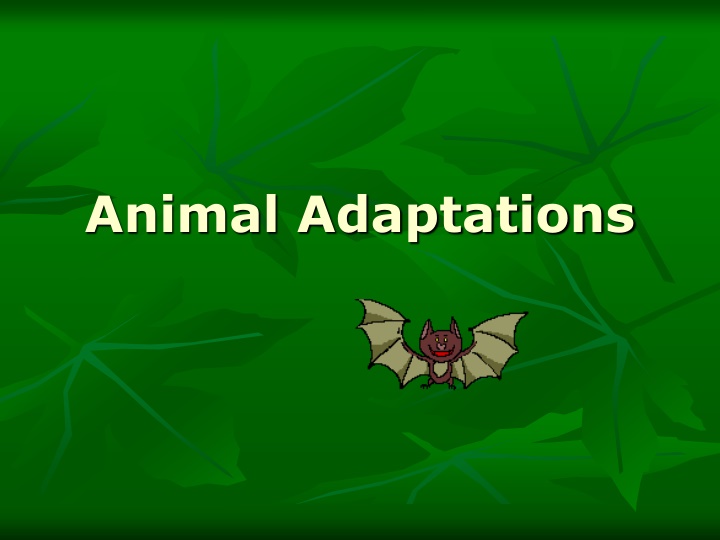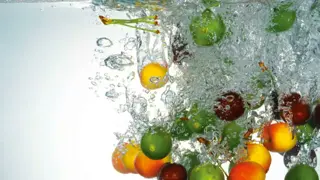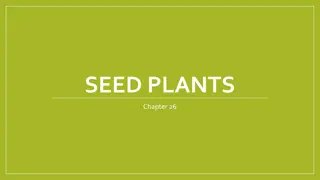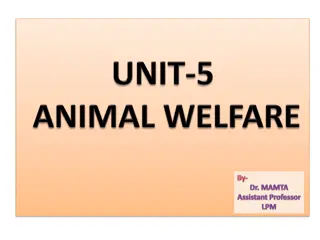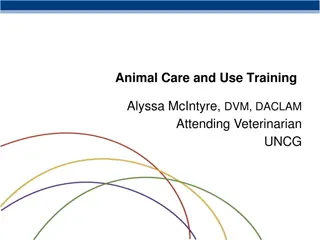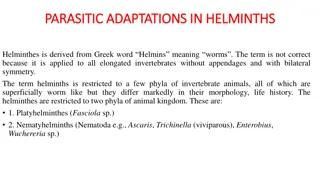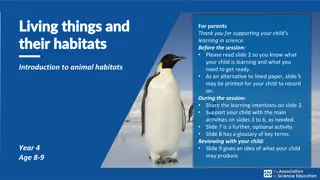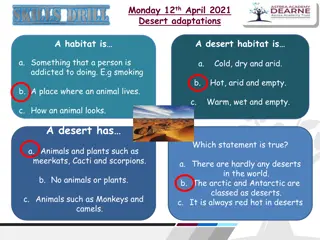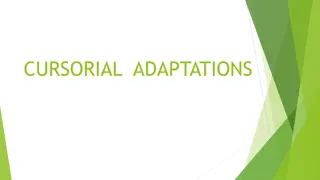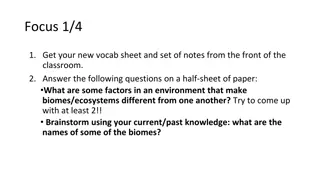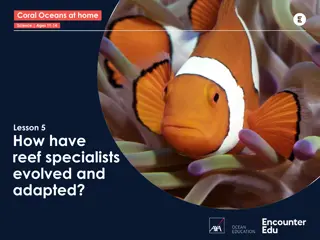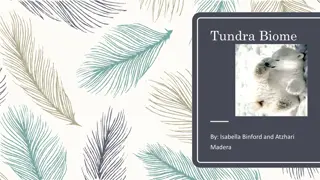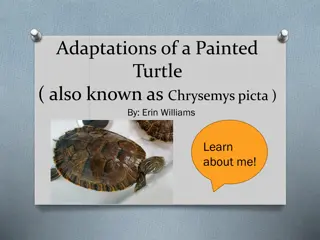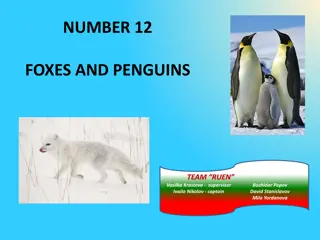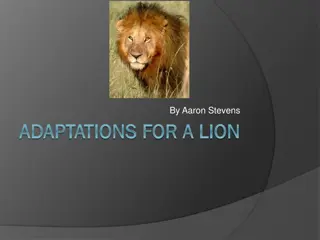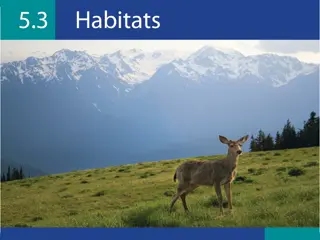Animal Adaptations
This content delves into the fascinating world of animal adaptations, exploring how various species evolve to survive in their environments. From structural adaptations like body coverings and teeth to behavioral adaptations such as migration and hibernation, animals utilize a range of strategies to thrive. Discover the concepts of protective coloration, mimicry, and more, shedding light on the diversity of adaptations in the animal kingdom.
Uploaded on Feb 24, 2025 | 2 Views
Download Presentation

Please find below an Image/Link to download the presentation.
The content on the website is provided AS IS for your information and personal use only. It may not be sold, licensed, or shared on other websites without obtaining consent from the author.If you encounter any issues during the download, it is possible that the publisher has removed the file from their server.
You are allowed to download the files provided on this website for personal or commercial use, subject to the condition that they are used lawfully. All files are the property of their respective owners.
The content on the website is provided AS IS for your information and personal use only. It may not be sold, licensed, or shared on other websites without obtaining consent from the author.
E N D
Presentation Transcript
Types of Adaptation Anything that helps an organism survive in its environment is an adaptation. It also refers to the ability of living things to adjust to different conditions within their environments. Structural adaptation Protective coloration Mimicry Behaviour adaptations Migration Hibernation
Structural adaptations A structural adaptation involves some part of an animal's body. Teeth Body coverings Movement
Protective Coloration Coloration and protective resemblance allow an animal to blend into its environment. Another word for this might be camouflage. Their camouflage makes it hard for enemies to single out individuals.
Mimicry Mimicry allows one animal to look, sound, or act like another animal to fool predators into thinking it is poisonous or dangerous.
Behaviour adaptations Behaviour adaptations include activities that help an animal survive. Behaviour adaptations can be learned or instinctive. Social behaviour Behaviour for protection
Migration Animals migrate for different reasons. This is when behavioral adaptation that involves an animal or group of animals moving from one region to another and then back again. better climate better food safe place to live safe place to raise young go back to the place they were born.
Hibernation This is deep sleep in which animal s body temp droops, body activities are slowed to conserve energy. E.g. Bats, woodchucks & bears.
This powerpoint was kindly donated to www.worldofteaching.com http://www.worldofteaching.com is home to over a thousand powerpoints submitted by teachers. This is a completely free site and requires no registration. Please visit and I hope it will help in your teaching.
